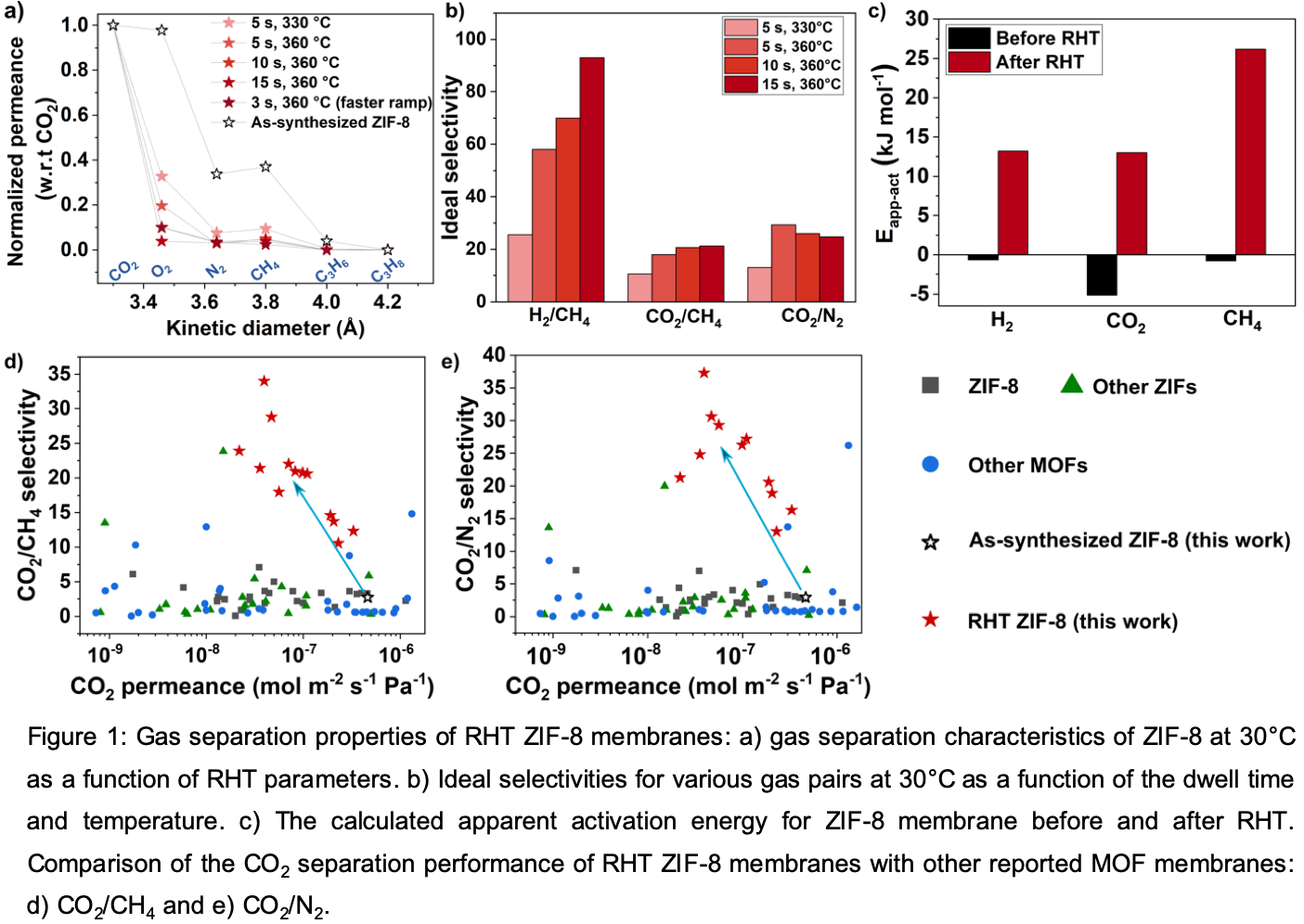Addressing Lattice Flexibility in Metal Organic Framework Membranes for Carbon Capture
Metal-organic framework (MOF) membranes are advantageous to their nanoporous counterparts owing to a high degree of structural tunability, relatively fast crystallization kinetics, and higher reproducibility [1-3]. Although MOF membranes were first reported almost a decade ago, so far, an attractive CO2/CH4 or CO2/N2 separation performance has remained elusive. This is because MOFs possessing a pore aperture suitable for CO2 sieving, typically suffer from lattice flexibility and gate-opening phenomena and as a result, a sharp molecular cut-off is not obtained. For example, ZIF-8, one of the most popular MOFs, has a crystallographically-determined pore aperture of 0.34 nm, ideal for separating CO2 (kinetic diameter or k.d. of 0.33 nm) from N2 (k.d. of 0.36 nm) and CH4 (k.d. of 0.38 nm). However, CO2/CH4 or CO2/N2 selectivities greater than 5 have not been reported from the polycrystalline ZIF-8 membranes, hindering their application in biogas purification, natural gas sweetening and post-combustion carbon capture.
Here we report a novel post-synthetic rapid heat treatment (RHT) method, implemented in a few seconds between 320-400 °C, which drastically improves the carbon capture performance of the ZIF-8 membranes. Lattice stiffening is confirmed by the appearance of a temperature-activated transport, attributed to a stronger interaction of gas molecules with the pore aperture. Spectroscopic and X-ray diffraction studies confirm that while the coordination environment and crystallinity are unaffected, lattice distortion and strain are incorporated in the ZIF-8 lattice, increasing the lattice stiffness. Unprecedented CO2/CH4, CO2/N2, and H2/CH4 selectivities of up to 34, 37, and 200 respectively, which is an order of magnitude higher than the values reported so far for ZIFs, and a complete blockage of C3H6 is achieved [4]. Overall, the RHT treatment is a facile and versatile technique that can vastly improve the gas separation performance of the MOF membranes.

[1] Zhao, X.; Wang, Y.; Li, D. S.; Bu, X.; Feng, P. Mater. 2018, 30 (37), 1705189.
[2] He, G.; Dakhchoune, M.; Zhao, J.; Huang, S.; Agrawal, K. V. Funct. Mater. 2018, 28 (20), 1707427.
[3] Babu, D. J.; He, G.; Villalobos, L. F.; Agrawal, K. V. ACS Sustain. Chem. Eng. 2019, 7 (1), 49–69.
[4] Babu, D. J.; He, G.; Hao, J.; Vahdat, M. T.; Schouwink, P. A.; Mensi, M.; Agrawal, K. V. Advanced Materials, 2019, Just Accepted. doi:10.1002/adma.201900855.